It is the pink one today again?Pink balloon flying under halo conditions
Temperature: minus 28 Celsius, minus 18 F Windchill: minus 42 Celsius, minus 43.5 F Wind: 14.3 knots Weather: sunny with snow blowing, snow and ice crystals in the air.
The morning started at 6 am and was busy with posting the journal and photos. Then my computer internet plate broke. The computer does not pick up the wireless from summer camp across the station, unfortunately. The IT department has been very helpful trying to help me and will request a replacement part from McMurdo.
Now to my answer to the photochemistry at the South Pole:
As I wrote yesterday: photochemistry (sunlight interacting with gas molecules) is one of the key elements of ozone dynamics near the snow surface. At the South Pole we have very unique conditions during this time of the year that enhances surface ozone production. These conditions are: continuous sun shine, relatively light winds, and cold temperatures in the troposphere. The study is important to understand ozone production mechanisms at the South Pole and over all of Antarctica. . One theory is that the sun reduces nitrates in the snow to nitrogen oxides. This subsequently leads to photochemical ozone production near the snow surface air up to about 200m. (This layer of air is called boundary layer. A boundary layer is a well mixed air that does not mix with the air layer above). This ozone production is far form being harmful to humans in the troposphere. It helps to explain natural ozone production far form any pollution sources. Because ozone near the surface is usually a result of a polluted air mass.
In the afternoon Bryan and I tried out a different way to collect surface ozone data with the pink balloon. Because of the wind, we knew we could not retrieve it. So a GPS was not attached. To slow down the descent, we attached two parachutes to allow for better confirmation of the ozone data.
Pink is in again
Bryan is filling the helium into the pink surface ozone balloon.*
Valve check
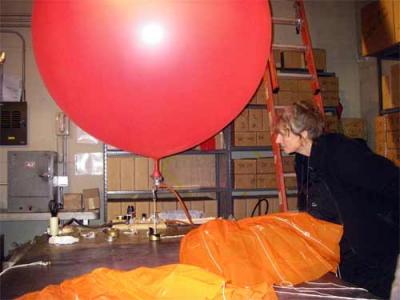 Elke is checking the valve.*
Elke is checking the valve.*
Double Parachtes
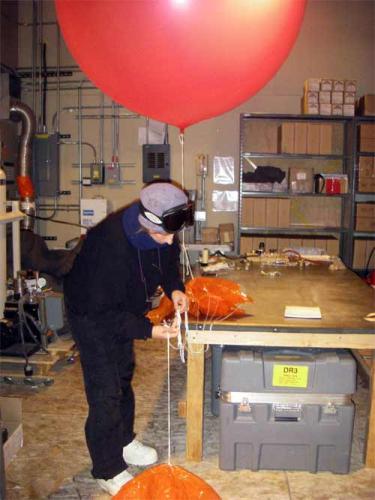 Elke is attaching the two orange parachutes.*
Elke is attaching the two orange parachutes.*
Pink is leaving the BIF
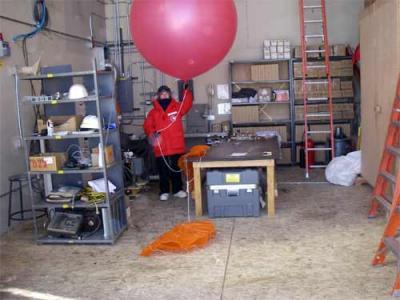 We are ready for the launch. The doors to the BIF are open and Elke is starting to carry out the balloon with the ozone sonde.*
We are ready for the launch. The doors to the BIF are open and Elke is starting to carry out the balloon with the ozone sonde.*
Pinky is Ready for Launch
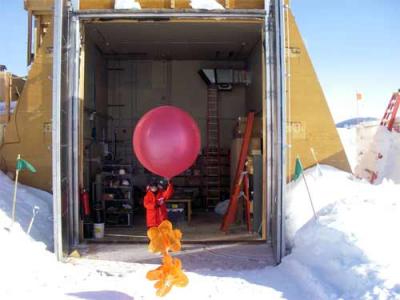 Elke is just stepping outside and ready to let go of the balloon.*
Elke is just stepping outside and ready to let go of the balloon.*
Data via Radio
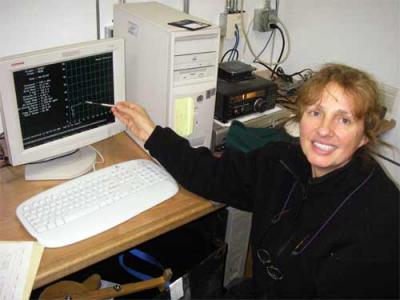 The data is submitted via radio-sonde and we can observe the ozone data collection on the computer inside the BIF. It was completed by 6:30 because the balloon flew higher than we thought. *
The data is submitted via radio-sonde and we can observe the ozone data collection on the computer inside the BIF. It was completed by 6:30 because the balloon flew higher than we thought. *
Before going to dinner we noticed a halo –sundogs formation around the sun. The wind and the blowing snow were the right conditions for it.
Halos over the Pole
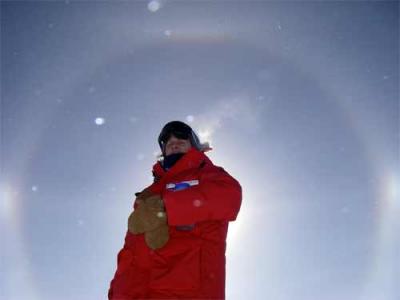 Elke is blocking the sun for this photo to be able to capture the halo and sundog formation in the image.*
Elke is blocking the sun for this photo to be able to capture the halo and sundog formation in the image.*
After dinner at about 9pm, Bryan needed to collect some snow samples for a co-worker In Boulder. We went to the clean air area near ARO further away from the station. The blowing wind created small snow sculptures on the ground.
Vast Space
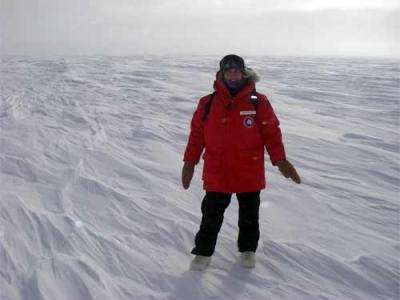 The wind had picked up and seeing the blowing snow and the vastness of space was amazing.*
The wind had picked up and seeing the blowing snow and the vastness of space was amazing.*
Wind, Snow, and Sun
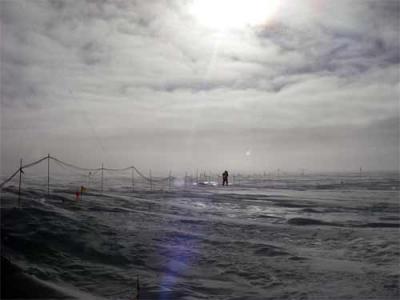 Bryan inside the clean air area near ARO.*
Bryan inside the clean air area near ARO.*
Collecting Snow
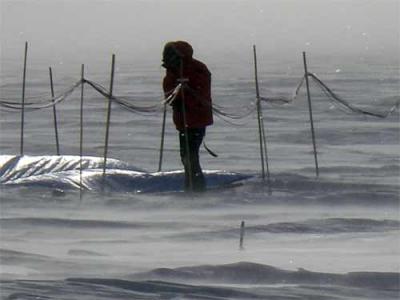 Bryan collecting snow.*
Bryan collecting snow.*
Wind and snow sculptures
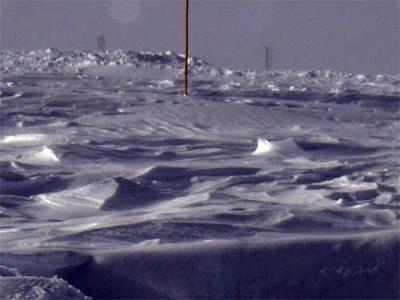 The wind carves out any loose snow.*
The wind carves out any loose snow.*
We were happy to know that the warm station was only a few minutes away. As we walked home we spoke of the adventurers like Scott and Amundsen who walked through snow fields like these for many weeks to reach South Pole Station. How much has changed since those brave men arrived here! We felt inspired and took more pictures of the Geographic Pole near the plate that honors both men.
Two Poles
 The Ceremonial Pole and the Geographic Pole in front of the new South Pole Station.*
The Ceremonial Pole and the Geographic Pole in front of the new South Pole Station.*
Question of the day: what are hallows?

